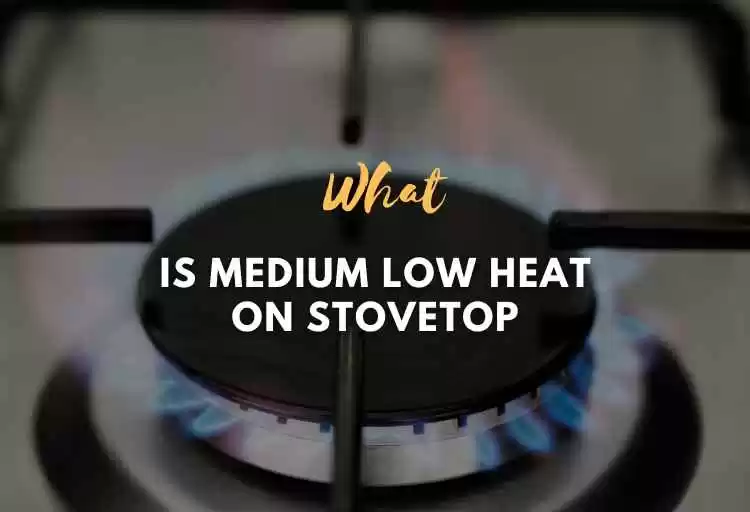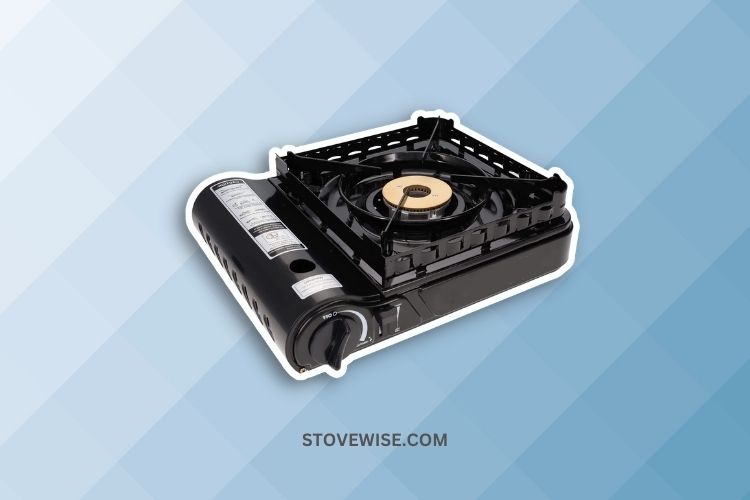How Does a Gas Stove Lighter Work?
Are you curious about how your gas stove lighter works? Maybe you’ve been using it for years, but you’ve never really thought about how it works. Well, wonder no more!
How Does a Gas Stove Lighter Work? A gas stove lighter utilizes the piezo-electric effect to generate a high-voltage electric spark. When the user presses the button, a spring-loaded hammer strikes a piezo-electric crystal, producing the voltage. This current passes through an electrode gap, ionizing the air and creating a spark. The spark ignites the gas from the stove’s burner, initiating the flame for cooking.
Gas stove lighters are cost-effective and commonly used to ignite gas burners, providing a convenient alternative for stoves lacking automatic ignition systems. Safety precautions must be followed to prevent accidents and fire hazards.

Contents
What is a Gas Stove Lighter?
First, let’s define what a gas stove lighter is.
A gas stove lighter is a device used to ignite the burners on a gas stove. It is specifically designed to produce a small, controlled flame that can be directed toward the gas burner, igniting the fuel and initiating the combustion process. The lighter typically consists of a long, narrow tube or barrel with a button or trigger mechanism at one end.
When the button or trigger is pressed, it releases a small amount of flammable gas from the lighter’s fuel reservoir. This gas is then ignited by a spark mechanism located near the tip of the barrel, creating a flame. The user can direct this flame towards the burner to light the gas and initiate the cooking process.
Gas stove lighters are commonly used in households and commercial kitchens as a convenient and efficient way to ignite gas burners. They eliminate the need for matches or lighters, providing a controlled and easily adjustable flame for safe and precise lighting of the stove.
Is It Safe to Use a Lighter to Light a Gas Stove?
Using a lighter to manually light a gas stove can be safe if proper precautions are followed. It is essential to ensure the absence of gas leaks by checking for odors or hissing sounds. Adequate ventilation in the kitchen is crucial to disperse the gas.
It is advisable to use a lighter specifically designed for gas stoves, with extended nozzles for increased safety. Following the manufacturer’s instructions is important, as they provide specific guidelines for safe usage.
Keep lighters out of the reach of children and pets to prevent accidents. While lighting the stove, remain attentive and avoid distractions. Once the flame is ignited, turn off the lights and never leave it unattended.
However, it is worth noting that many modern gas stoves feature automatic ignition systems, which eliminate the need for manual lighters and provide an additional layer of safety. If unsure or concerned about safety, consult the stove’s manufacturer or seek professional guidance.
How Does a Gas Stove Lighter Work?
Here is a detailed explanation of how a gas stove lighter works:
- Button Activation: The user presses a button or triggers the gas stove lighter, initiating the ignition process.
- Piezo-Electric Crystal: Inside the lighter, there is a piezo-electric crystal, often made of lead zirconate titanate (PZT). This crystal is known for its ability to generate an electric current when mechanical pressure is applied to it.
- Spring-Loaded Hammer: When the button is pressed, it activates a spring-loaded hammer mechanism. The hammer strikes the piezo-electric crystal, exerting mechanical pressure on it.
- Piezo-Electric Effect: The piezo-electric crystal, upon being struck, undergoes the piezo-electric effect. This effect causes the crystal to generate a high-voltage electric current in the range of 800 volts.
- Electrode Gap: The gas stove lighter is designed with two metallic electrodes positioned close together but with a small gap between them. The high voltage generated by the piezo-electric crystal is directed toward this electrode gap.
- Ionization of Air: As the high voltage current is applied across the electrode gap, it creates an electric field in the surrounding air. This electric field ionizes the air, meaning it causes the air molecules to lose or gain electrons, creating a conductive path.
- Spark Generation: The ionized air acts as a path for the electric discharge. Due to the high voltage, a spark is generated across the electrode gap. This spark is the visible electric discharge.
- Ignition of Combustible Gas: The gas stove burner, connected to the gas supply, releases combustible gas (such as natural gas or propane). The spark from the gas stove lighter ignites this gas, resulting in the ignition of the burner.
- Flame Initiation: The ignited gas from the burner produces a flame. Once the flame is established, the user can adjust the gas flow and control the heat intensity by manipulating the gas stove’s control knobs.
Why is a Gas Stove Lighter Better than Matches or a Lighter?
So, why should you use a gas stove lighter instead of matches or a lighter? There are a few reasons why a gas stove lighter is the better choice:
- Convenience: With a gas stove lighter, you don’t have to worry about finding matches or a lighter. You can just press a button and your stove will light up.
- Safety: Using matches or a lighter to light your stove can be dangerous. You run the risk of burning yourself or starting a fire. With a gas stove lighter, you don’t have to worry about any of that.
- Cost: While a gas stove lighter may cost a little more upfront, it will save you money in the long run. You won’t have to keep buying matches or lighters, which can add up over time.
What is the Right Way To Use a Gas Stove Lighter?
Using a gas stove lighter is easy. Here’s how to do it:
- Make sure your gas stove is turned off.
- Hold the gas stove lighter in one hand and press the button with your thumb.
- Hold the lighter close to the burner you want to light.
- Turn on the gas to the burner you want to light.
- Move the lighter closer to the burner until you hear a clicking sound.
- Once you hear the clicking sound, the burner should light up.
How Do You Replace the Battery in a Gas Stove Lighter?
Over time, the battery in your gas stove lighter will run out of power. When this happens, you’ll need to replace the battery. Here’s how to do it:
- Preparation: Ensure the gas stove is turned off and cool to prevent any accidental ignition. Also, gather the necessary tools, such as a small screwdriver and a replacement battery of the correct type and size.
- Locate the Battery Compartment: Examine the gas stove lighter to identify the battery compartment. It is usually located near the ignition button or on the backside of the lighter.
- Remove the Battery Cover: Using a small screwdriver or your fingers, gently pry open the battery cover or slide it in the direction indicated by the arrow or symbol. Take care not to use excessive force to avoid damaging the lighter.
- Remove the Old Battery: Once the battery cover is open, carefully remove the old battery from the compartment. Pay attention to the battery’s orientation (positive and negative terminals) for proper replacement.
- Dispose of the Old Battery: Dispose of the old battery in accordance with local regulations and guidelines, as it may be hazardous waste. Consider recycling options available in your area.
- Insert the New Battery: Take the new battery and insert it into the battery compartment, ensuring it is properly aligned with the correct polarity (+ and -). Follow the manufacturer’s instructions or markings inside the compartment for guidance.
- Close the Battery Cover: Once the new battery is in place, gently close the battery cover by pressing or sliding it back into position. Ensure it securely latches or fastens to prevent the battery from falling out.
- Test the Lighter: Press the ignition button or trigger to verify if the new battery is functioning correctly. If the lighter produces a spark, it indicates the battery replacement was successful.
- Final Checks: Double-check that the battery compartment is securely closed, and that the ignition button operates smoothly. Confirm that the lighter ignites the gas stove burner as intended.
Conclusion
Finally, a gas stove lighter is a simple but effective item that makes lighting your gas stove easier and safer than using matches or a lighter. It works by producing a spark, which ignites the gas emitted by your stove’s burners.
Using a gas stove lighter is straightforward, as is refilling the battery. Take a minute the next time you’re cooking on your gas stove to appreciate the ease and safety of your gas stove lighter.






